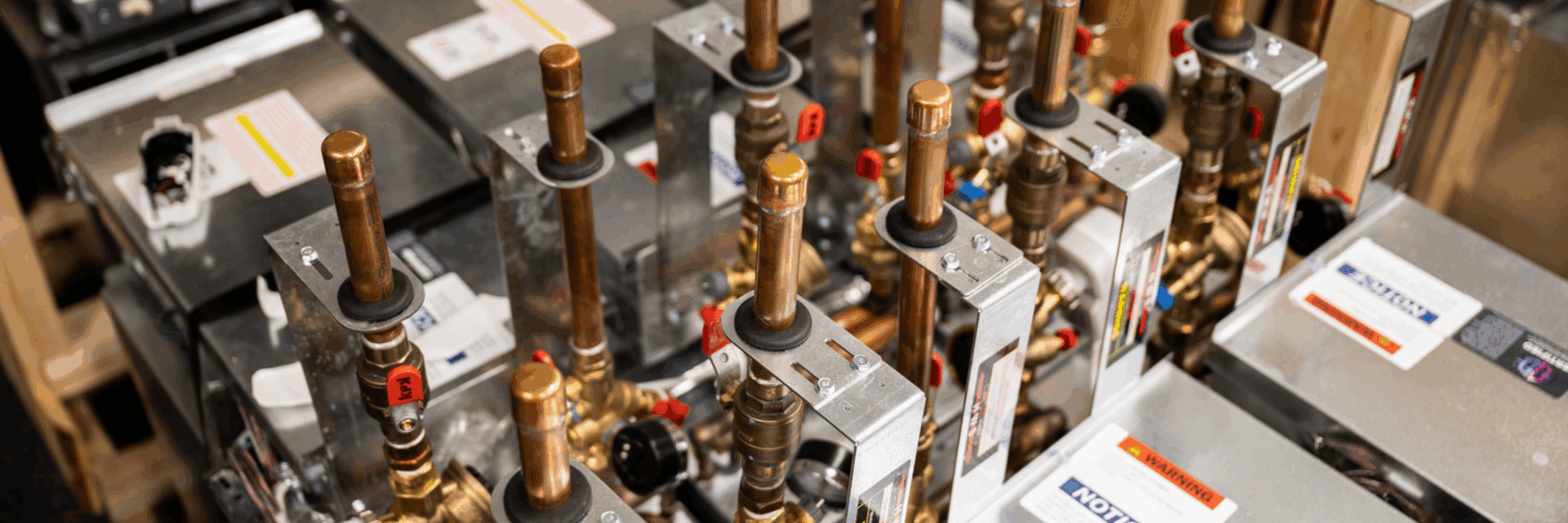Energy efficiency challenges start small: A draft in the hallway; a heating complaint in the winter; a spike in the utility bill. Over time, these small challenges grow into large budget overruns, declining occupant comfort and system failures. But aging buildings—from city halls and libraries to hospitals, office buildings and campuses—aren’t beyond saving. Their lasting use is dependent on a strategic shift toward targeted energy efficiency upgrades.
With Arch Energy, Consigli’s energy division, we specialize in helping organizations plan and implement smart, cost-effective and energy-efficient retrofitting strategies that don’t just reduce energy use but improve how buildings function.
The Challenge: Aging Infrastructure & The Impact of Inaction
Facility managers and public leaders face the same problem: managing 30-, 50-, even 100-year-old buildings that were built before energy efficiency was a priority and when fossil fuels were cheap. The consequences are clear:
- Increasing energy costs
- Frequent maintenance calls and repairs
- Uncomfortable or unhealthy indoor environments
- Strained capital budgets
The Shift: From Short-Term Fixes to Long-Term Value
Upgrading a building’s energy systems isn’t a cost—it’s an investment. Like managing our health, we don’t wait to act on signs of a cognitive issue or ignore high blood pressure until there’s an emergency. Investing in prevention is always effective.
Energy efficiency is the preventive care of building health. It reduces risk, improves comfort and avoids expensive surprises down the line. The key is in shifting away from quick fixes and toward long-term performance.
Our Solution: Practical, Performance-Driven Action
Our approach is grounded in data, tailored to unique constraints and guided by long-term thinking:
- Grounded in data: We provide targeted energy and heat loss audits and benchmarking services to understand what’s working and what isn’t, and inform next steps.
- Tailored to unique constraints: Every building has distinctive operating schedules, occupant needs and budget limitations. We develop energy efficiency measures—from design to installation—that satisfy unique constraints.
- Guided by long-term thinking: We help clients plan and prioritize improvements that yield lasting value.
How we do it: Reduce. Reuse. Electrify.
 Reduce: Reduce energy through smarter systems. Lighting controls, tighter building envelopes, digital controls and optimized HVAC scheduling are low-hanging fruit that deliver immediate savings.
Reduce: Reduce energy through smarter systems. Lighting controls, tighter building envelopes, digital controls and optimized HVAC scheduling are low-hanging fruit that deliver immediate savings.
![]() Reuse: Capitalize on what’s already available. Many aging buildings have functioning infrastructure that can be upgraded and integrated into high-efficiency operations. We focus on reusing—or recovering—wasted energy from that infrastructure to cut energy use without major overhauls:
Reuse: Capitalize on what’s already available. Many aging buildings have functioning infrastructure that can be upgraded and integrated into high-efficiency operations. We focus on reusing—or recovering—wasted energy from that infrastructure to cut energy use without major overhauls:
- Heat recovery from ventilation systems can pre-warm or pre-cool incoming air.
- Water-side heat recovery can capture thermal energy from drains, condensers and other equipment to reuse for space heating or domestic hot water.
 Electrify: Where it makes sense, replace fossil-fuel-based systems with high-efficiency heat pumps. Electrification increases building resilience, simplifies maintenance and supports compliance with changing energy codes and carbon regulations.
Electrify: Where it makes sense, replace fossil-fuel-based systems with high-efficiency heat pumps. Electrification increases building resilience, simplifies maintenance and supports compliance with changing energy codes and carbon regulations.
The Benefits: Energy Efficiency as a Strategic Asset
- Lower Operating Costs: Targeted retrofits reduce annual energy costs by 20–40% or more. That money can be reinvested into services, staffing or capital reserves.
- Reduced Maintenance: Fewer breakdowns means fewer emergency repairs. Arch Energy ensures the designs we implement minimize complexity and are easy to operate and maintain.
- Improved Comfort and Health: Thermal comfort, air quality and lighting quality directly impact occupant performance, productivity and satisfaction.
- Resilience and Adaptability: Efficient systems make your building more flexible and able to adapt to future technologies, climate events and tenant needs. This means that your heating and cooling equipment is available during extreme events.
- Environmental Impact: Every upgrade shrinks a carbon footprint, which means cleaner air, regulatory compliance and a facility that contributes to sustainability targets.
Why Now? Energy Efficiency as the Foundation of Compliance
Across the U.S., local laws and building performance standards are raising the bar on energy use, emissions and operational transparency. Like New York City’s Local Law 97 and Boston’s BERDO, jurisdictions are mandating change, and aging buildings are at the center of it.
Energy efficiency is the first, most cost-effective step toward compliance. Benchmarking helps understand a building’s carbon footprint, and efficiency upgrades reduce penalties and extend compliance timelines. Waiting increases the risk of fines, unplanned capital expenses and tenant dissatisfaction. Early action, guided by a clear roadmap, puts you in control of your building’s future.
The Power of Partnership: Why Collaboration Matters
Energy efficiency isn’t a one-time checklist. It requires collaboration, practical know-how and follow-through. That’s where Arch Energy comes in—not just as a contractor, but as a partner to:
- Help reduce costs by identifying the right mix of strategies, incentives and phasing.
- Take ownership of outcomes, guiding the design, construction and commissioning processes.
- Supplement your internal resources, bringing the focus, time and energy that overburdened teams often don’t have.
For our team, energy efficiency is not an afterthought—it’s a priority. Building managers are weighed down by years of deferred decisions, and Arch Energy can help. With countless technologies and pathways, a partner who knows how to turn a vision into action is key.
Where We’re Doing It
Massachusetts State Transportation Building Energy Project
While the 1,000,000 sq. ft. building remained occupied, Consigli and its Arch Energy division replaced legacy lighting with LEDs, added wireless occupancy and daylight controls, upgraded 1,300 Variable Air Volume (VAV) boxes and converted the entire building from pneumatic air to Digital (DDC) controls and cooling and heating plant optimization. $1.89 million in utility funding was secured to support the project.
The Impact:
- 5 million kWh saved annually (equivalent to powering 450 homes)
- 10,000 MMBtu in thermal energy saved
- 2,300 MTCO₂e avoided (like taking 500 cars off the road or planting 38,000 trees)

